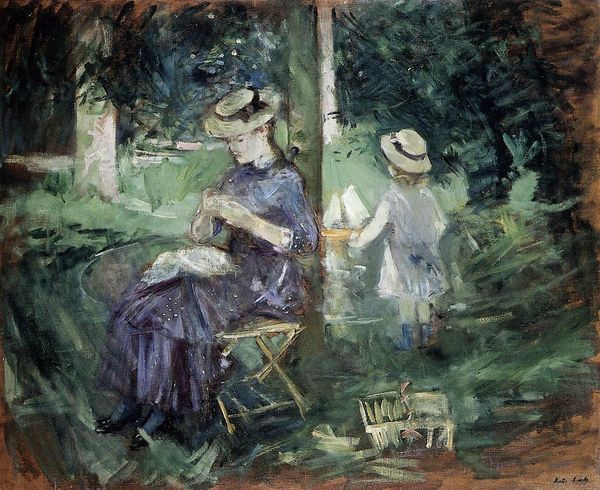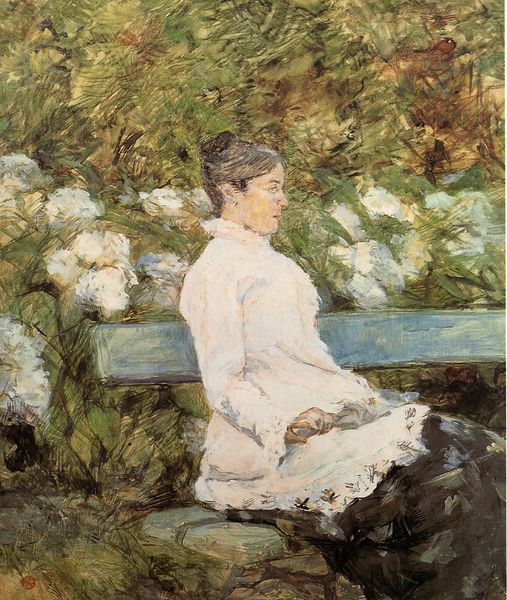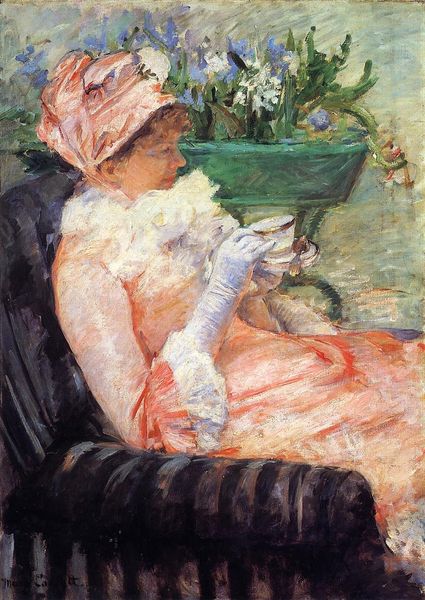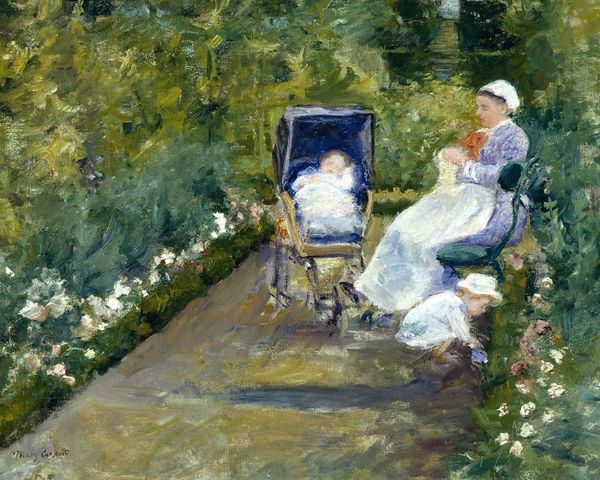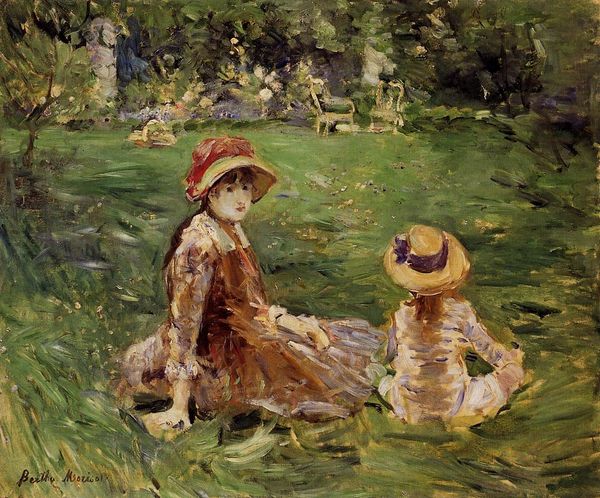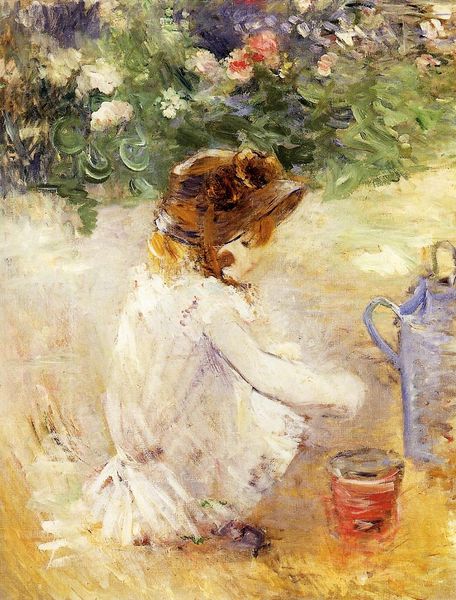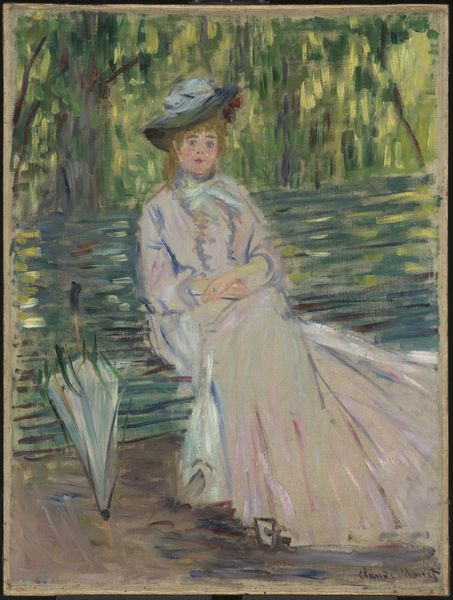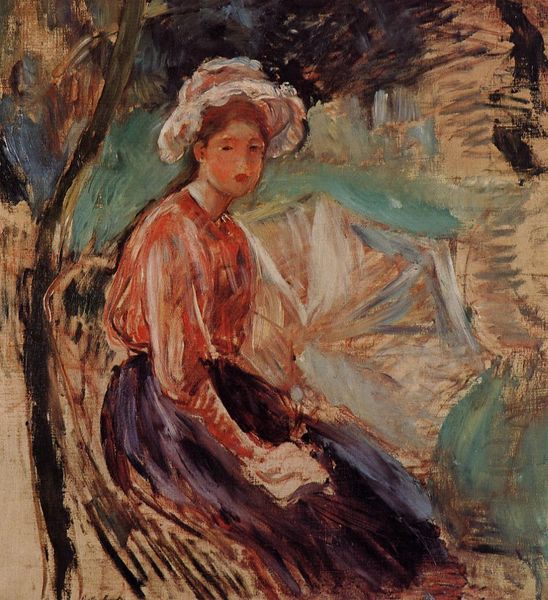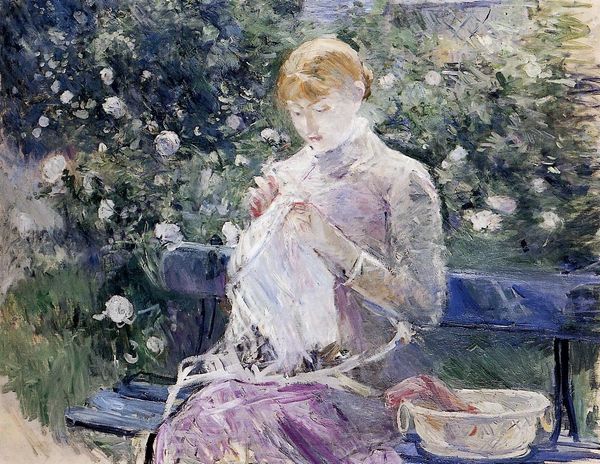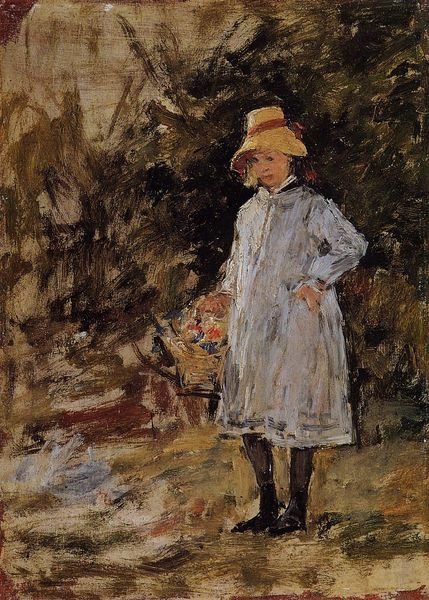
plein-air, oil-paint
#
portrait
#
impressionism
#
plein-air
#
oil-paint
#
landscape
#
impressionist landscape
#
oil painting
Copyright: Public domain
Curator: Welcome. We are standing before Berthe Morisot’s "Young Woman Sewing in the Garden," completed in 1883 using oil paints. Editor: It strikes me as an incredibly intimate moment. The diffused light creates a tranquil, almost dreamlike, quality. There's a strong emphasis on the woman's stillness amidst the vibrant natural world, very captivating. Curator: Indeed. And understanding the social context of Morisot's life is crucial here. As a female Impressionist, her access to public spaces was limited. This artwork, a product of plein-air painting, represents the domestic sphere to which she and many women of her era were confined. The garden becomes a site of both freedom and constraint. Editor: I see the recurring symbol of enclosure, but it speaks to so much more. Gardens themselves often represent Eden, paradise. The sewing connects her to Penelope-like archetypes: weaving, creating, waiting. She embodies both activity and passive reflection in her isolated state. Curator: That's a fascinating take on the traditional symbols, though I am equally concerned with Morisot’s depiction of the woman. By rendering her faceless, does Morisot highlight a loss of individual identity for women constrained by societal expectations of beauty and domesticity? Is the woman meant to remain forever unfulfilled? Editor: Or maybe she allows every woman looking to place herself, or aspects of her life, in that very human and unpretentious domestic scenery. The soft, diffused application of paint does this very cleverly, and to me. The unfinished details ask for interaction rather than dictation. Curator: These details remind me how deeply connected the work is with Impressionism's move towards depicting subjective impressions, even ephemeral experiences of light and colour. How does this interplay of artistic intention and medium reflect wider cultural narratives about women's limited expression within the public space? Editor: Looking at the scene again, it really transcends a mere snapshot; I can feel continuity from antiquity to the artist's present. But beyond historical echoes, what truly resonates is its palpable, universal feeling of serenity, a peaceful, mindful existence amidst a simple outdoor setting. Curator: And what’s particularly resonant here is considering the intersection of Morisot’s gender with the very art that’s immortalized her – her unique gaze that allowed her to reveal a certain intimacy and domesticity during her era. Editor: Exactly, that subtle yet firm capturing of the quiet rhythms of life really keeps its timelessness alive.
Comments
No comments
Be the first to comment and join the conversation on the ultimate creative platform.

